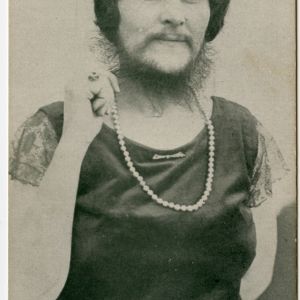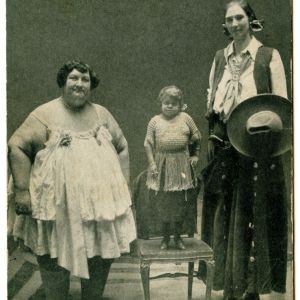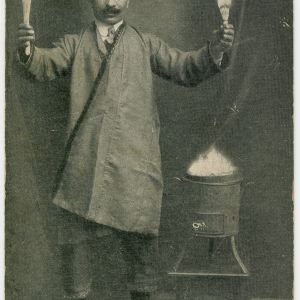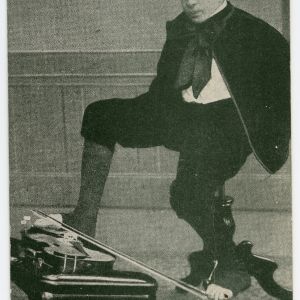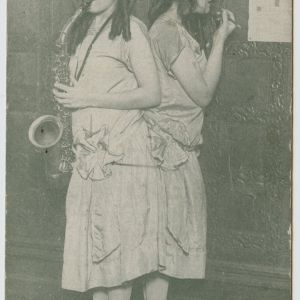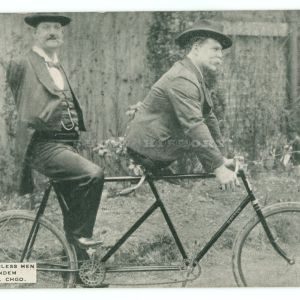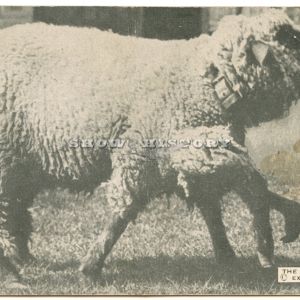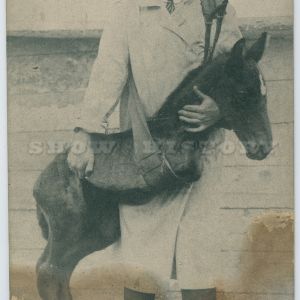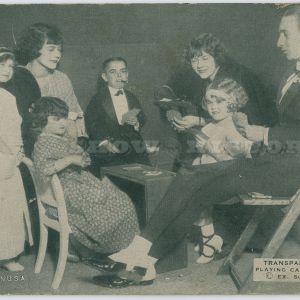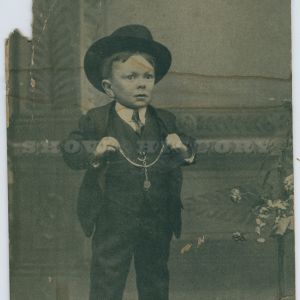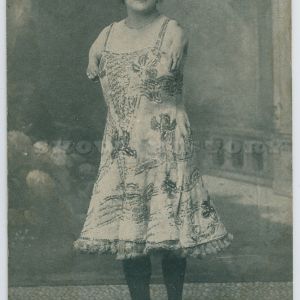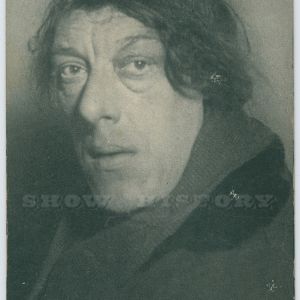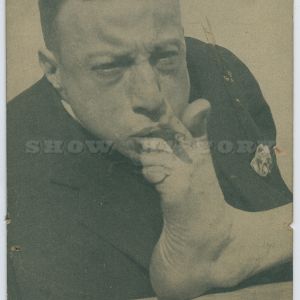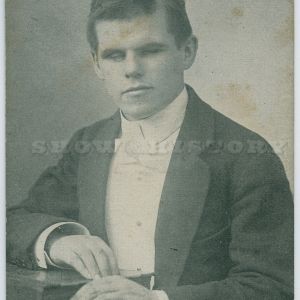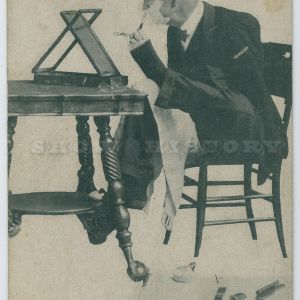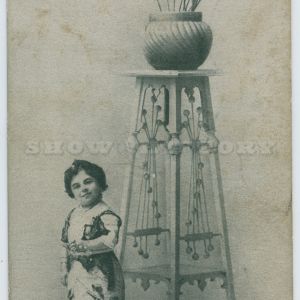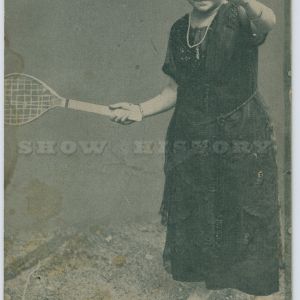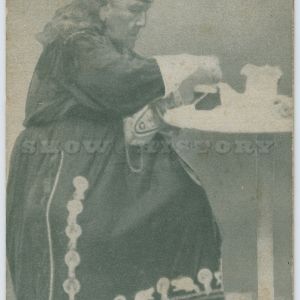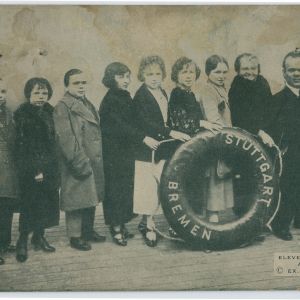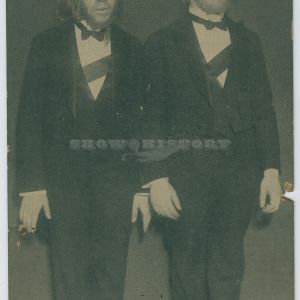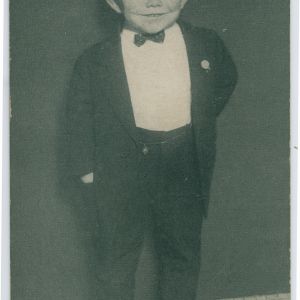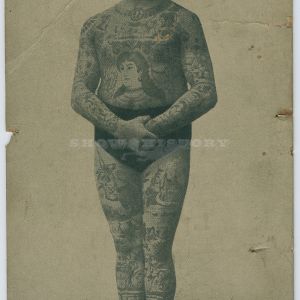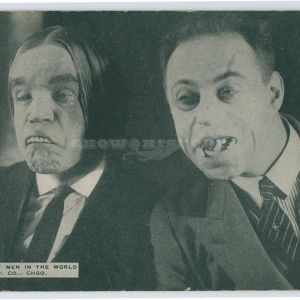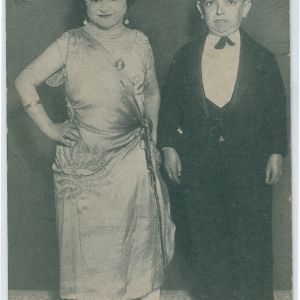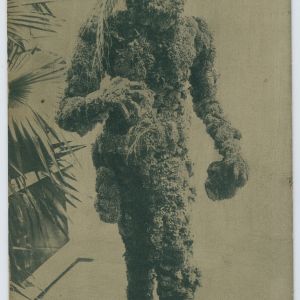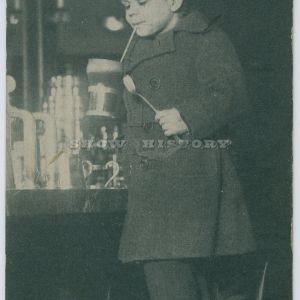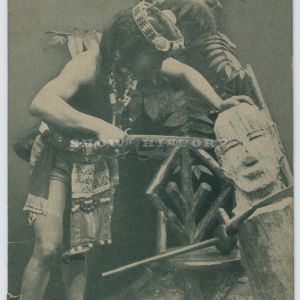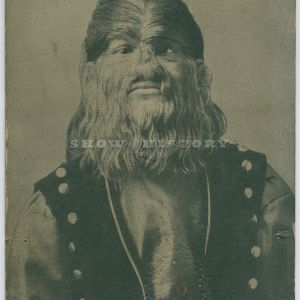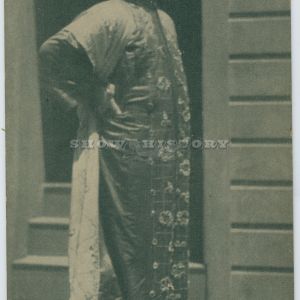Exhibit Supply Company

From 1901-1985, the Chicago-based Exhibit Supply Company— shortened to “EX. SUP. CO. CHGO.” or ESCO— manufactured arcade vending machines that dispensed different series of postcard-sized souvenirs. Typically the card dispensing machines were found in penny arcades, shooting galleries, drug stores, pool rooms, cigar stores, ice cream parlors, etc.– i.e. anywhere you could park a vending machine.
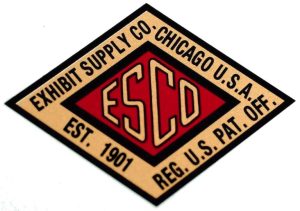
EX.SUP.CO. also manufactured their own arcade or Mutoscope cards vended from their machines.
In addition, the company also manufactured early slot machines, trade stimulators, peep show machines, fortune tellers, gun games, strength testers, diggers, pinball, and other arcade machines. Esco built over 390 different models of machines over their 65 year span.
The last ESCO card vending machines were manufactured in 1966. Cards continued to be printed as needed to fill orders, and in 1977 ESCO was sold, and the last cards issued in 1980. ESCO was dissolved in 1985.
The first arcade cards from ESCO were advertised at $1.75 per thousand cards. The cards were randomly dispensed from vending machines for a penny each.
Produced on thick, cheap, cardboard stock, the cards were printed single color photolithography.
Often called arcade cards or Mutoscope cards, the cards were printed in the millions, and featured boxers, baseball players, pinups, fortune telling cards, Hollywood actors, radio stars, scenes from films, risqué comic gag cards, “Western Stars,” and many different joke cards.
Most interesting to us is the very scarce 64 card set of Ex. Sup. Co. cards featuring Coney Island performers. This untitled series was manufactured and sold in the mid- late-1920s, and showcases well-known (and little known) freaks of the sideshow. Like all the cards produced by EX. SUP. CO. at this time, they are cheaply printed in black and white on thicker cardboard stock with blank backs. The series may in fact be the origin of one of the most iconic images of sideshow– the “Tripp & Bowen, Bicycle Riders” photo– reproduced in many different formats over the years.
The freak series of cards were perhaps made originally for sale primarily or exclusively in vending machines at Coney Island, but it is possible that they may have also been sold elsewhere at other amusement areas, such as Chicago’s Riverview Park.
Only one card has been found thus far with any notation on the back– a rubber-stamp simply saying “Coney Island.”
Some of these rare cards are shown here: https://imageevent.com/exhibitman/interestingexhibitcards
A checklist is in the works.

EX.SUP.CO. also manufactured their own arcade or Mutoscope cards vended from their machines.
In addition, the company also manufactured early slot machines, trade stimulators, peep show machines, fortune tellers, gun games, strength testers, diggers, pinball, and other arcade machines. Esco built over 390 different models of machines over their 65 year span.
The last ESCO card vending machines were manufactured in 1966. Cards continued to be printed as needed to fill orders, and in 1977 ESCO was sold, and the last cards issued in 1980. ESCO was dissolved in 1985.
The first arcade cards from ESCO were advertised at $1.75 per thousand cards. The cards were randomly dispensed from vending machines for a penny each.
Produced on thick, cheap, cardboard stock, the cards were printed single color photolithography.
Often called arcade cards or Mutoscope cards, the cards were printed in the millions, and featured boxers, baseball players, pinups, fortune telling cards, Hollywood actors, radio stars, scenes from films, risqué comic gag cards, “Western Stars,” and many different joke cards.
Most interesting to us is the very scarce 64 card set of Ex. Sup. Co. cards featuring Coney Island performers. This untitled series was manufactured and sold in the mid- late-1920s, and showcases well-known (and little known) freaks of the sideshow. Like all the cards produced by EX. SUP. CO. at this time, they are cheaply printed in black and white on thicker cardboard stock with blank backs. The series may in fact be the origin of one of the most iconic images of sideshow– the “Tripp & Bowen, Bicycle Riders” photo– reproduced in many different formats over the years.
The freak series of cards were perhaps made originally for sale primarily or exclusively in vending machines at Coney Island, but it is possible that they may have also been sold elsewhere at other amusement areas, such as Chicago’s Riverview Park.
Only one card has been found thus far with any notation on the back– a rubber-stamp simply saying “Coney Island.”
Some of these rare cards are shown here: https://imageevent.com/exhibitman/interestingexhibitcards
A checklist is in the works.
Related Images
THIS CONTENT IS RESTRICTED TO SUBSCRIBERS
Join now or LOG IN to view this content, you won’t be disappointed!

